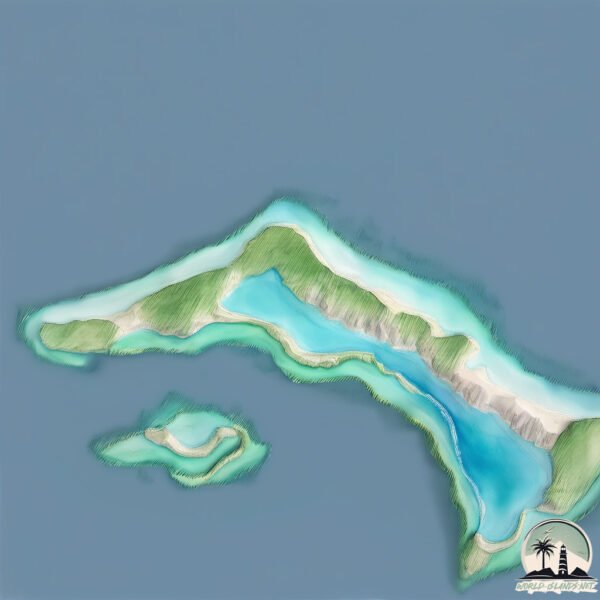Weda

Welcome to Weda, a Tropical island in the Halmahera Sea, part of the majestic Pacific Ocean. This guide offers a comprehensive overview of what makes Weda unique – from its geography and climate to its population, infrastructure, and beyond. Dive into the details:
- Geography and Size: Explore the island’s size and location.
- Climate and Weather: Weather patterns and temperature.
- Topography and Nature: Uncover the natural wonders of the island.
- Infrastructure and Travelling: Insights on reaching, staying, and making the most of your visit.
- News and Headlines: Latest News.
Geography and size of Weda
Size: 10.4 km²
Coastline: 33.4 km
Ocean: Pacific Ocean
Sea: Halmahera Sea
Continent: Oceania
Weda is a Medium Island spanning 10 km² with a coastline of 33 km.
Archipel: Melanesia – A subregion of Oceania in the southwestern Pacific Ocean, including countries like Fiji, Solomon Islands, and Vanuatu, known for their diverse cultures and languages.
Tectonic Plate: Birds Head – Also known as the Bird’s Head Plate, it is a small tectonic plate in the vicinity of the Bird’s Head Peninsula in West Papua. The plate is noted for its interactions with the Pacific, Australian, and Philippine Sea plates, contributing to the geological complexity of the region.
The geographic heart of the island is pinpointed at these coordinates:
Latitude: -0.5444636 / Longitude: 128.37242453
Climate and weather of Weda
Climate Zone: Tropical
Climate Details: Tropical Rainforest Climate
Temperature: Hot
Climate Characteristics: This climate is typified by heavy rainfall throughout the year, high humidity, and consistently high temperatures, leading to lush rainforests and rich biodiversity. Seasonal temperature variations are minimal.
Topography and nature of Weda
Timezone: UTC+09:00
Timezone places: Asia/Tokyo
Max. Elevation: 23 m
Mean Elevation: 11 m
Vegetation: Mangrove Forest
Tree Coverage: 74%
The mean elevation is 11 m. The highest elevation on the island reaches approximately 23 meters above sea level. The island is characterized by Plains: Flat, low-lying lands characterized by a maximum elevation of up to 200 meters. On islands, plains are typically coastal lowlands or central flat areas.
Dominating Vegetation: Mangrove Forest
Found in coastal areas and river deltas, these unique wetland ecosystems are adapted to saline conditions and are crucial for coastal protection and biodiversity. Weda has a tree cover of 74 %.
Vegetation: 12 vegetation zones – Exceptionally Diverse Island
Islands with more than ten vegetation zones are among the most ecologically rich and varied in the world. These islands are akin to miniature continents, boasting an incredible array of ecosystems. The sheer range of habitats, from high peaks to deep valleys, rainforests to deserts, creates a mosaic of life that is unparalleled. They are crucial for conservation and ecological studies.
Infrastructure and Travelling to Weda
Does the island have a public airport? no.
There is no public and scheduled airport on Weda. The nearest airport is Buli Airport, located 161 km away.
Does the island have a major port? no.
There are no major ports on Weda. The closest major port is LABUHA, approximately 97 km away.
The mean population of Weda is 43 per km². Weda is Gently Populated. The island belongs to Indonesia.
Continuing your journey, Pulau Damar is the next notable island, situated merely km away.
📍weda island - halmahera selatan #word #viral #halmaheraselatan #fyp #shorts #nature #adventure



Indonesia is classified as Emerging region: MIKT: Mexico, Indonesia, South Korea, and Turkey – Economies recognized for their development potential and emerging market status. The level of income is Lower middle income.
News – Latest Updates and Headlines from Weda
Stay informed with the most recent news and important headlines from Weda. Here’s a roundup of the latest developments.
Please note: The data used here has been primarily extracted from satellite readings. Deviations from exact values may occur, particularly regarding the height of elevations and population density. Land area and coastline measurements refer to average values at mean high tide.
